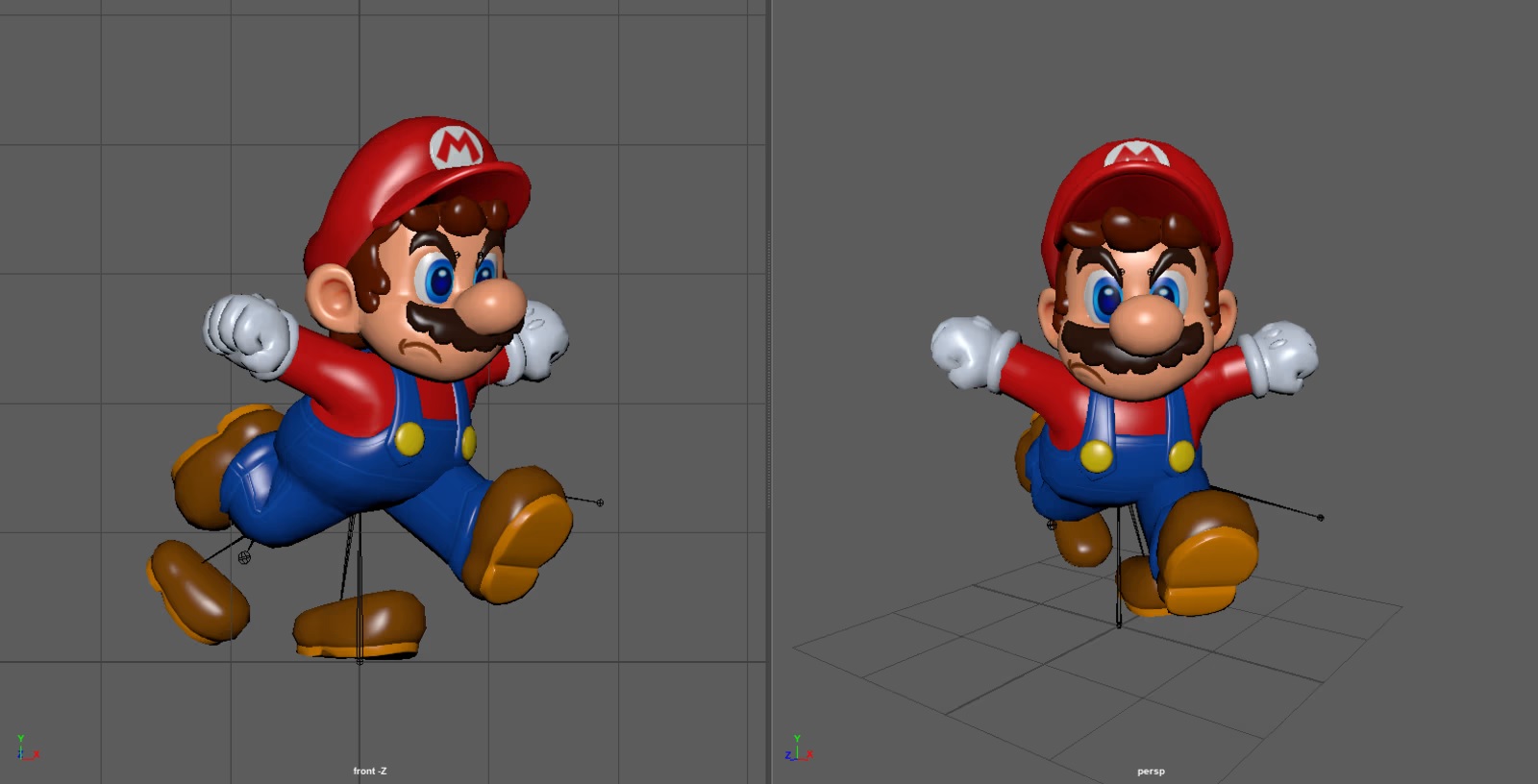Super Mario Bros. Wonder has more expressive animations than ever before, and the team has spoken more about that in a new interview published today.
Designer Koichi Hayashida revealed that ” joints and animations have more than doubled in number since the previous title.” This is ultimately what made more expressive movements possible.
One issue during development concerned characters turning towards the player to show their expressions. As art director Masanobu Sato put it: “if we set Mario’s nose to face the direction of travel, like we used to, with a modern 3D model, you wouldn’t be able to see his facial expressions.” The team “had to find the right balance to make it easy for players to see both the character’s expressions and where they’re headed.”
Hayashida: Also, with Nintendo Switch’s technology, we were able to make movements and facial expressions more dynamic than before. The number of joints (12) has also increased considerably. The more joints there are, the broader the range of motion and the greater the variety of movements that can be expressed.
(12) Joints connect individual parts in a 3D model.
Sato: Both joints and animations have more than doubled in number since the previous title. Facial expressions that are difficult to express using joints were created by replacing the models with new ones.
Even the movements of the small characters were depicted in great detail, and I thought that was really cute.
Sato: The game’s animation has the role of communicating the character’s state to the player. In this game, we revisited Mario’s iconic poses from the days of pixel graphics. We took a look at each of them, including a jumping motion with arms extended and a sudden stop after running. As a result, we believe we’ve been able to create characters that leave a strong impression.
Kondo: I remember being very surprised at how the expressiveness of the animation kept improving during development.
Sato: However, while it was good that the characters were more expressive, another challenge surfaced when we tried to turn their faces toward players to show their expressions. It’s a well-known story within the company that Miyamoto-san said designing Mario’s nose to be big back in the day of the very first pixelated Mario made it easier to see which direction Mario was facing. But if we set Mario’s nose to face the direction of travel, like we used to, with a modern 3D model, you wouldn’t be able to see his facial expressions.
So by trying to make it easier for players to see where Mario’s headed, you make it impossible for them to see the facial expressions you worked so hard to create.
Sato: That’s right. On the other hand, if we turned Mario’s face toward players so they could see his facial expressions, it would be difficult to tell which direction he’s moving. Therefore, we had to find the right balance to make it easy for players to see both the character’s expressions and where they’re headed.
So you made the direction their body’s facing indicate their direction of travel, while their face, showing their expressions, is easily visible from the player’s point of view.
Sato: Yes. So here’s the final outcome.
Oh my, look at this Mario facing toward us…
Sato: I know. If you look at the picture on the right, you’ll see that Mario’s face is distorted when seen from the direction he’s traveling toward. However, if you look at the picture on the left, you can see how Mario appears on-screen. During gameplay, players can see both the direction Mario is heading and his facial expressions. In fact, we’ve made these kinds of adjustments not only to the facial expressions but to the entire body.
I see. So you needed to adjust how Mario’s 3D model appears so that the visual is optimized during gameplay.
Hayashida: I think the sound effects have also evolved greatly, along with the advancement of facial expressions and movements.
Kondo: I agree. We gave each character a distinctive jump sound and deliberately created sounds that would help convey the characters’ movements to players. Also, we wanted to give it a fresh feel by integrating the sounds of musical instruments into the sound effects, so in this game, we used an electric ukulele made of Yezo spruce for Mario’s jump sound. Using strings to accompany the traditional action of running before jumping to increase jump distance has enabled us to add sounds of varying dynamics to better express the feeling of ascending. This is the first time the jump sound changes based on how the player jumps, just like how string instruments make different sounds depending on how strongly or softly a musician plucks the strings.
Super Mario Bros. Wonder arrives for Switch on October 20, 2023.


